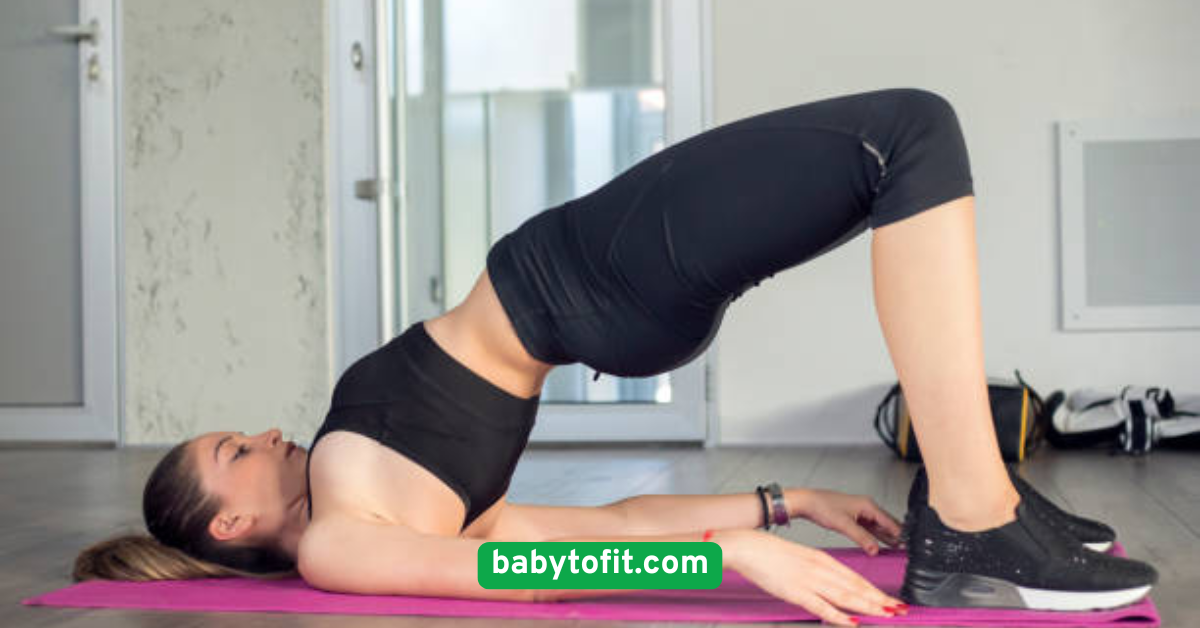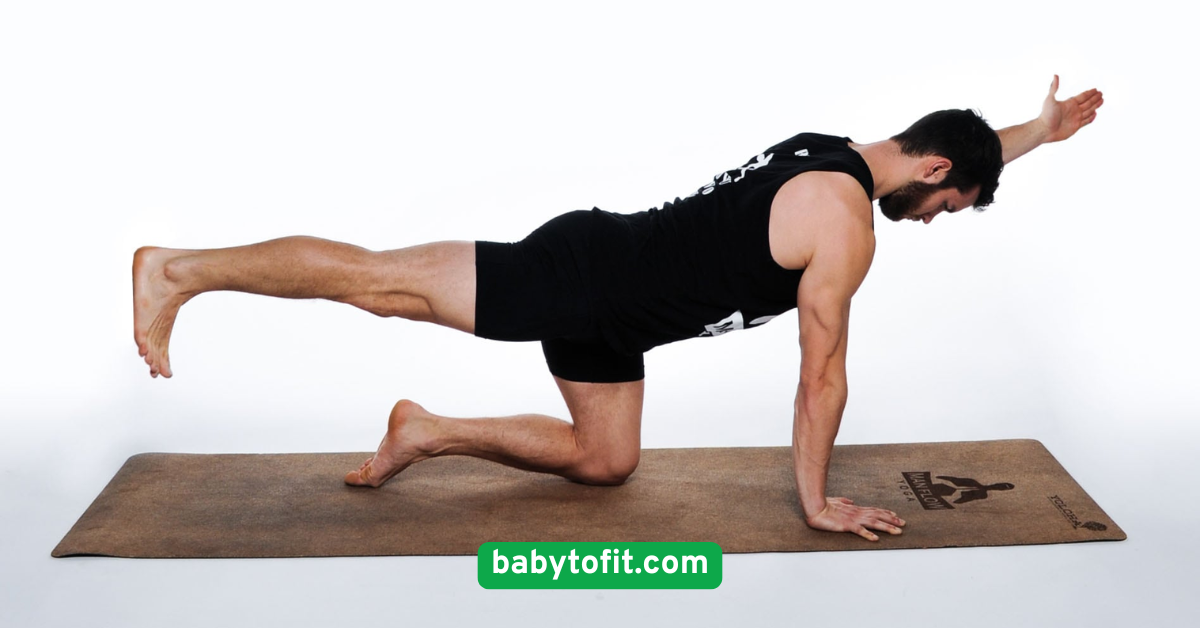12 Effective Postpartum Workouts for Core Recovery (2025)
Did you know that nearly 60% of women experience some degree of diastasis recti, or abdominal muscle separation, after delivery? This common condition can make core recovery tricky, but with the right workouts, healing is absolutely possible. Postpartum core workouts are not about rushing back to your pre-pregnancy fitness but about healing gently and regaining strength safely.In this article, we’ll explore 12 effective postpartum workouts for core recovery. These exercises focus on rebuilding strength, improving stability, and supporting your pelvic floor. Whether you’re a few weeks or several months postpartum, these workouts can help you reconnect with your body and start feeling like yourself again. Let’s dive in!
1. Pelvic Tilts
Pelvic tilts are a foundational postpartum exercise that gently activates your deep core muscles. This movement helps bring awareness to the pelvic area, which often feels disconnected after childbirth. Pelvic tilts can relieve lower back pain—a common complaint among new moms—by encouraging proper pelvic alignment and spinal mobility.To perform this exercise, lie on your back with knees bent and feet flat on the floor. Slowly tilt your pelvis upward, flattening your lower back against the floor, and then release. The key is to engage your transverse abdominis—the deep abdominal muscle that acts like a natural corset around your belly. Pelvic tilts encourage this muscle’s activation without putting pressure on your healing abdominal wall.Incorporating pelvic tilts into your routine can also improve pelvic floor function, which is essential for bladder control and overall core stability. Start with 10-15 slow, controlled repetitions daily and gradually increase as you regain strength.

2. Heel Slides
Heel slides are an excellent gentle workout for postpartum core recovery, targeting your lower abdominal muscles and hips. This exercise encourages slow, controlled movement, which helps you rebuild strength without strain.Begin by lying on your back with knees bent and feet flat on the floor. Slowly slide one heel away from your body until your leg is straight, then slide it back to the starting position. Focus on maintaining engagement in your core and avoid overarching your back.Heel slides also enhance hip mobility, a vital component for new mothers as they often experience hip tightness due to pregnancy and delivery. This movement encourages smooth coordination between your core and hip muscles, setting a strong foundation for more advanced postpartum exercises.

3. Modified Side Plank
The modified side plank is a fantastic exercise to build lateral core strength and target your obliques without putting undue pressure on your healing abdomen. It also improves balance and posture, which are often compromised during pregnancy.To perform the modified side plank, lie on your side with your forearm on the floor and knees bent for support. Engage your core and lift your hips off the floor, forming a straight line from your shoulders to your knees. Hold this position for 15 to 30 seconds, breathing steadily, then switch sides.This workout strengthens your core muscles on the sides of your torso and supports spinal stability. It’s gentle yet effective for postpartum moms, especially those managing diastasis recti, because it avoids traditional plank pressure on the midline.

4. Bridge Pose with Core Activation
Bridge pose is well-known for strengthening the glutes and lower back, but when combined with intentional core activation, it’s a powerhouse for postpartum recovery. This pose helps realign your pelvis—a crucial step in regaining core function after childbirth.Lie on your back with knees bent and feet hip-width apart. As you lift your hips towards the ceiling, focus on drawing your belly button toward your spine to engage the transverse abdominis. Keep your glutes active and avoid overarching your lower back.Holding the bridge pose while engaging your core can relieve pelvic discomfort and build essential stability. Aim for 3 sets of 10-15 repetitions, gradually increasing your hold time as your strength improves.

5. Seated Belly Breathing
Seated belly breathing is more than just a relaxation technique—it’s a vital exercise for postpartum core recovery. Deep diaphragmatic breathing stimulates your pelvic floor muscles and helps restore the mind-body connection that can feel lost after delivery.Sit comfortably with a straight spine, placing one hand on your belly. Inhale deeply through your nose, allowing your belly to rise, then exhale fully, feeling your belly gently contract. This encourages activation of the core muscles in a gentle and natural way.This breathing technique also reduces stress and improves oxygen flow, essential benefits for any new mom navigating the physical and emotional demands of postpartum life. Practicing belly breathing daily can enhance your core engagement throughout other exercises.

6. Bird-Dog
The bird-dog exercise is a low-impact movement that improves core balance, coordination, and stability—perfect for postpartum recovery. It simultaneously strengthens your lower back and abdominal muscles without adding strain.Start on your hands and knees, keeping your spine neutral. Extend your right arm forward and your left leg backward, keeping both parallel to the floor. Engage your core to maintain balance, then return to the starting position. Repeat on the opposite side.This workout enhances muscle coordination and control, which can be diminished during pregnancy. Bird-dog exercises support a balanced core by addressing both front and back muscles and are safe for those recovering from diastasis recti.

7. Leg Lifts (Bent Knee)
Leg lifts with bent knees target the lower abdominal muscles gently and help rebuild pelvic stability postpartum. This exercise requires controlled movement and focus, which helps avoid unnecessary pressure on your abdominal wall.Lie on your back with knees bent and feet flat on the floor. Slowly lift one leg, keeping the knee bent at 90 degrees, and lower it back down with control. Keep your core engaged throughout the movement to support your lower back.Leg lifts strengthen the deep core and pelvic muscles, essential for protecting your spine and improving functional strength as you navigate motherhood. Aim for 10-15 repetitions on each side, progressing as you feel stronger.

8. Wall Push-Ups
Wall push-ups provide an effective way to engage your core while building upper body strength safely after childbirth. The upright position reduces strain on your core while encouraging full-body stability.Stand facing a wall at arm’s length. Place your hands on the wall and lower your chest toward it by bending your elbows. Keep your body in a straight line from head to heels, engaging your abdominal muscles as you push back to the starting position.This exercise strengthens the arms and shoulders and integrates core engagement for stability. It’s a budget-friendly, low-impact workout suitable for busy moms looking to regain strength gradually.

9. Cat-Cow Stretch
The cat-cow stretch is a gentle spinal mobilization that improves posture and encourages core engagement through breath coordination. It’s particularly soothing for postpartum moms experiencing back stiffness or discomfort.Begin on all fours. Inhale as you drop your belly toward the floor, lifting your head and tailbone (cow pose). Exhale as you round your spine, tucking your chin and tailbone (cat pose). Repeat for 10-15 cycles, syncing movement with your breath.This dynamic stretch loosens the spine, improves flexibility, and activates deep core muscles. It also helps relieve tension, making it an excellent addition to any postpartum workout routine.

10. Dead Bug (Modified)
The modified dead bug is a core stability exercise designed to promote controlled movement and protect healing abdominal muscles. It improves coordination and balance, essential for daily activities with a newborn.Lie on your back with knees bent and feet flat. Engage your core, lift your feet off the floor, and slowly extend one leg while lowering the opposite arm overhead. Return to the starting position and alternate sides.This low-impact exercise encourages proper muscle recruitment and alignment. It is especially useful for moms managing diastasis recti because it avoids excessive intra-abdominal pressure while strengthening the core.

11. Standing Side Leg Raises
Standing side leg raises strengthen your hips and core simultaneously, improving balance and pelvic stability—key factors in postpartum recovery.Stand tall, holding onto a sturdy surface for support if needed. Slowly lift one leg out to the side without tilting your torso. Lower with control and repeat for 10-15 repetitions before switching sides.This movement helps realign the pelvis and engages your obliques, aiding core rebuilding. It’s a practical exercise that can be done at home with minimal equipment, perfect for busy new moms.

12. Pelvic Floor Kegels
Kegel exercises are essential for postpartum pelvic recovery, strengthening muscles that support your bladder, uterus, and bowel. Strong pelvic floor muscles improve overall core stability and prevent common postpartum issues like incontinence.To perform kegels, contract the muscles you would use to stop urine flow. Hold for 5 seconds, then release for 5 seconds. Aim for 10-15 repetitions, gradually increasing hold time as strength improves.Pelvic floor training complements all core workouts and is crucial for comprehensive postpartum recovery. Practicing kegels daily can help you regain muscle tone and control, boosting your confidence and comfort.

Conclusion
Recovering your core strength after childbirth is a journey that demands patience, kindness, and the right approach. These 12 effective postpartum workouts offer a safe, gradual path to rebuild your core and regain confidence in your body.
Remember, every small movement counts. Listen to your body, honor your healing process, and celebrate every step forward. Incorporating these exercises into your routine can transform not only your physical strength but also your overall well-being as a new mom.
Your body has done something incredible. Now, it’s time to nurture it back to health with gentle, effective workouts that support your core recovery and empower you for the wonderful days ahead.





